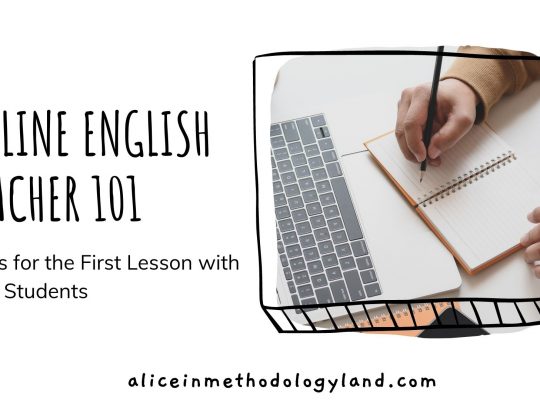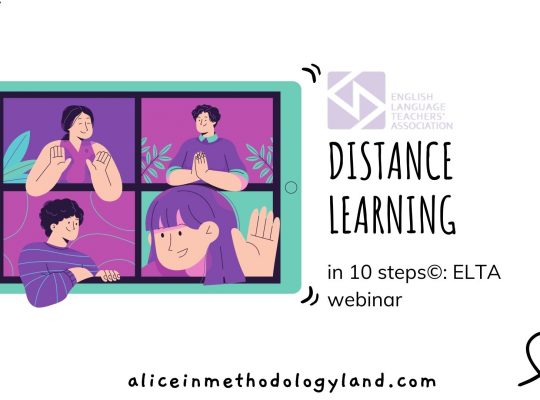Engaging young learners seems to be a neverending topic, and we are always in a constant search for practical activities that will practice all four skills, especially speaking. So keep reading to explore some activities designed to promote chit-chat in the classroom without putting pressure on young learners when it comes to speaking.
Speaking as a production skill somehow always comes last in large classrooms simply because there is this lingering idea that having too many students lowers the chances for speaking activities. While every teaching context is unique, I always disagree with my colleagues about skipping speaking activities in large classrooms. Why? Because I stand by the saying ‘the more, the merrier!’
I started my own online English school in 2021, and my curriculum with young learners is based on language acquisition by focusing on oral activities, themes, projects, storytelling, drama, science, and games, so I will try to share activities that fit all of the eclectic corners of my teaching methodology.
Now, let’s discuss what are the characteristics most effective speaking activities for young learners have.
Effective speaking activities are:
- Focusing on the learners’ needs and favorite topics.
- Using authentic language in a meaningful context.
- Providing a chance for the development of intrinsic motivation for participation.
- Capitalizing on the natural connection between speaking and listening.
- Encouraging the development of 21st-century skills such as collaboration and communication.
- Developmentally appropriate.
Here are 8 activities that will motivate young learners to enjoy speaking and discussing with other students.
All of these activities can also be done online and face-to-face, with minor adjustments, of course. In the end, it all depends on your teaching context, but I have used most of these activities both online and face-to-face.
1. Show-and-tell
This must be the most straightforward activity in the history of early childhood education! This is why it remains influential to this day. Ask your students to bring and show something they value. It can be an excellent activity in the warm-up portion of the lesson, or it can be done at the end of the lesson when they have to showcase some results or a project they did. Whatever the case may be, the little ones will always have something to show and tell you a story about it.
2. I can be an actor too
This is a whole program in my school, and here are some activities from that program. Most of them are for face-to-face lessons, but there is always a way to adapt them for distance learning. Some of my favorites include speaking gibberish, occupation pantomime, the interview game, and more. Click here for the full game collection.
3. Me in the story
A great activity I started using in storytelling, but then I expanded it to introduce real-life situations. I usually start with a problematic situation where something happened to my class puppet and then lead the children to tell me what they would do in the story. I usually let them speak whenever they want, and we make a story together. The puppet usually speaks to the introverted students, motivating them to talk because they don’t feel pressured to speak. Here’s an anecdote: We did a ‘me in the story’ drawing activity where the children had to give an alternative ending to the story, and the results were terrific. The story was about a class visiting a zoo and being eaten by an anaconda. In one ending, Sonic came and freed the class from the anaconda, the other ending talked about how the class had a party for the anaconda, and she didn’t chase the class anymore. Another ending had the teacher marry the anaconda and even described the whole wedding! A child’s imagination is truly endless.
4. Can you be a little researcher?
This is such a simple and by far my most favorite activity in the online classroom. I’ve also done it in the individual language lessons, and it worked beautifully. Who doesn’t like to correct their teacher? This activity can be done in two ways. First, you can either pretend not to have information about something and have the students make a proper question and research it online, after which they have to report the findings to the rest of the class. This is very engaging because they have to complete multiple reading and speaking activities, and they get to use their phones. Another way is to give them a text with some incorrect information and instruct them to analyze it in groups or pairs, find the mistake, and then search online to correct it. Here’s an example where I inserted wrong information and had them compete to find all the mistakes first.
5. Clap your hands!
This activity can be adapted to practice any specific grammar form or sentence formation. For example, I start by saying a sentence, and then the child who didn’t clap has to make a new sentence. For example, ”If you have a dog, clap your hands!” Next, those who do not have a dog have to make up a new sentence, and the circle continues until everyone forms at least one sentence or gets bored. After that, I usually introduce other things to prolong the activity, such as saying the sentence very quietly, then loud, very slow, and then very fast. Newsflash: Children love to shout!
6. What am I holding?
Introducing a discussion or starting the lesson with a warm-up has never been easier. Whatever your lesson topic may be, a realia (a prop that is a real object) is such a powerful attention grabber. For example, If we are starting a lesson on recycling, I will show up with a bag of trash and ask the children to help me describe and identify everything. If done online, I usually expand the activity and tell them to get up, run quickly, get a similar item from their house, and then say a sentence about it.
7. Anita went on a vacation
An idea I got from a delightful educator, John Harrop, where the class puppet goes on a vacation. My class puppet is a squirrel named Anita. She then reports from various locations via video chat, and when she comes back, we ask her many questions. I used this activity to work on YES/NO and WH question formation.
8. Spin the wheel
This activity is a part of my board game where when you hit the jackpot spot in the game, you are presented with a spinner, and you will have to answer an unusual/silly question. This is a game I use with older and more advanced young learners 10+ or teenagers, but it can easily be adapted to fit the lower level, young learners. To show you how versatile this activity is, I am sharing an example I adapted for teenagers.
To conclude
I do hope that you will have a chance to apply some of these activities in your classroom. Even if the speaking activities fail, as long as the learners are speaking, they are learning. So embrace the mistakes and use them to encourage students to continue the conversation even if it does not entirely follow your lesson plan. When it comes to young learners, the lesson plans in my classroom are always flexible. If an opportunity for inquiry-based learning or discussion or exploration arises, the lesson plan goes out the window. I must say that I say ‘bye, bye’ to it gladly.
References and bibliography:
- Saville-Troike, M. (2006). Introducing second language acquisition. Cambridge: Cambridge University Press.
- Brown, H. D. (2001). Teaching by principles: An interactive approach to language pedagogy (2nd Ed.). New York: Longman
- A collection of drama games
- An example for the ‘can you be a researcher’ game
- An example for the spin the wheel conversation
Originally published on British Council Teaching English.
How do you promote speaking in your younger learner classroom, and what activities do you use? What worked, and what was not so effective?
Write in the comments or via the contact page. I would love to hear your opinion.

Click here to explore my store where 99% of materials are forever free!
All the materials except lesson plans and 30+ page interactive activity books will be free FOREVER! Why? Because sharing is caring, and 2020 hasn’t been kind to all of us. Please consider donating to keep making FREE materials for everyone and keep my website open for all of you.
Don’t forget to leave a review when you download materials! It’s just a minute of your time, and it means a lot to me.
P.S. The store and the freebie library are not the same thing – the freebie library has some extra materials like conference presentations and webinar recordings which are not available in the store
The subscription link for the store is below my bio in every post.









